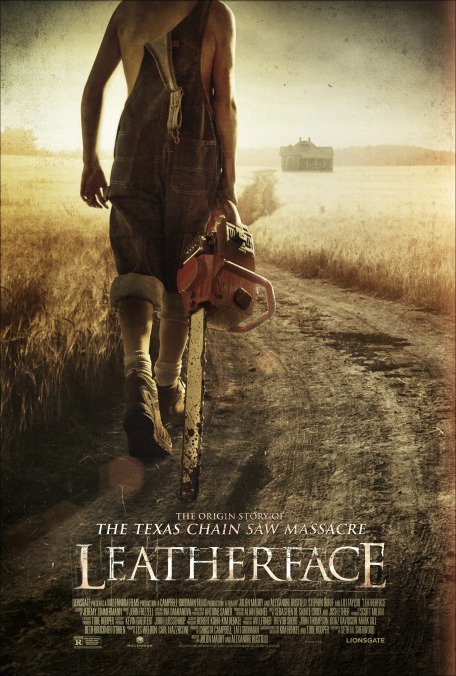Giving Leatherface a sad backstory is the dumbest direction yet for the Chain Saw series

One of the great, blood-freezing moments in all of horror is Leatherface’s first appearance in the original Texas Chain Saw Massacre. It’s so sudden, so unexpected, so nightmarishly casual. Some poor, dumb teen pokes his head into the wrong farmhouse, turns a corner into a doorway, and there he is: hulking, squealing, wearing someone else’s face, carrying a big mallet that he promptly connects with the kid’s noggin. Leatherface is only on screen for a few seconds—you could practically blink and miss his grand introduction—but from the moment he appears, as if through a rip in the fabric of the movie’s reality and the reality of movies, it’s clear that no rational explanation could ever account for such an abomination. He defies all motive, all knowable pathology. He just is.
Leatherface, however, begs to differ. The eighth film in the Texas Chain Saw saga labors under the misconception that the pig-brained backwoods bogeyman of Tobe Hooper’s unparalleled shock machine requires character motivation. Like an overeager therapist, it can’t wait to get the subhuman cannibal on the couch to tell everyone his life story. If you’ve ever really wondered about the first time Leatherface picked up a chainsaw, wonder no longer: The film opens with that formative moment, as 10-year-old Jed (Boris Kabakchiev) is encouraged by Ma Sawyer (Lili Taylor, alas) to make mincemeat out of a family rival. If he caught the crazies from his folks, what drove them off the deep end? It’s the kind of question best left unasked, lest anyone gets the bright idea to make a movie about how the Sawyers founded Texas or something.
Most of Leatherface takes place 10 years after this grisly rite of passage, and a few before the events of the original. Jed, who was taken away from his murderous clan and spent the rest of his childhood in an insane asylum, is now 20-year-old Jackson (Sam Strike), troubled but surprisingly kind and caring, at least compared to the rest of the hospital’s criminally insane patients. The challenge Seth M. Sherwood’s script sets for itself is credibly explaining how this non-homicidal guy—born without the developmental disabilities the other Chain Saw films have always implied—became a nonverbal, skin-wearing psychopath. Short answer: bad influences. The film eventually steers into a shrill outlaw crime spree, Jackson along for the ride with a a trio of escaped lunatics, the future fiend trying to protect a young nurse (Vanessa Grasse) the devil’s rejects have taken hostage.
But wait! Didn’t someone already lay out Leatherface’s origins, back in 2006's The Texas Chainsaw Massacre: The Beginning? Indeed they did, but that was actually a prequel to the remake. Leatherface bills itself as a direct relative of Hooper’s original—just like the recent Texas Chainsaw 3D, which retconned all the previous sequels, including a different film called Leatherface. (When did this franchise get as convoluted in its continuity as the X-Men movies?) Yes, the road-trip structure counts as a deviation from the usual formula of stranding a bunch of teenagers in a big, rustic house crawling with giggling nutjobs. But Leatherface still falls squarely in the tradition of a series that’s failed, movie after movie, to recapture the raw, reptilian power of its first entry. It all feels so redundant: the dusty country backroads; the screaming flights into the night, power saw roaring in the distance; the bullshit false equivalencies. (Sorry, but no, even the cruelest bastard lawman, like the Texas Ranger Stephen Dorff plays here, isn’t quite as bad as a clan of cannibalistic serial killers.)
All this recycled mayhem is staged with a certain slick craftsmanship by directors Alexandre Bustillo and Julien Maury, who made the almost unprecedentedly violent French horror film Inside. They give the gore (sawed off limbs, explosive exit wounds) a surgical realism, while getting a few striking images out of the production’s Bulgarian backdrop, subbing credibly in for the Longhorn state. But if Leatherface is perfectly competent in the staging, it’s pretty worthless in conception, designed as it is to provide a backstory, and an accompanying psychological rationale, that no one remotely required or requested. To turn Leatherface into a tragic figure, twisted by traumatic upbringing into a monster, is to forget that he’s scariest as a force of nature, which tend to be tough to diagnose. Remember, no one cares what the shark from Jaws was like as a tortured guppy.